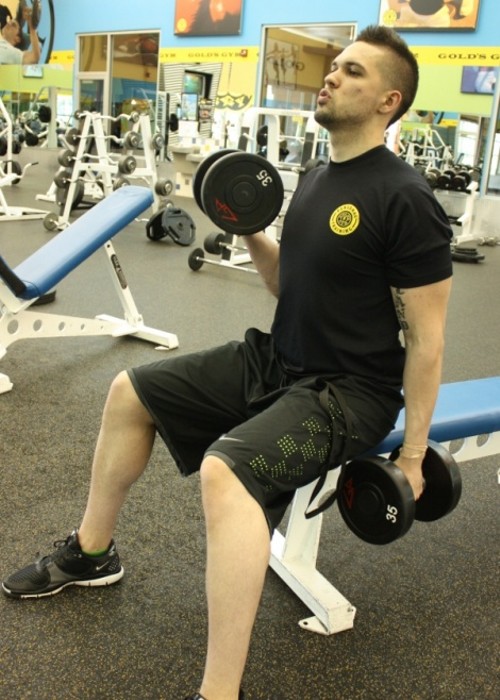Make the Most of Your Time at the Gym
If you're putting in the hours but not seeing the results, you might be doing something wrong.
By Wina SturgeonFor example, take a look at walkers and runners on the treadmills. How many do you see holding on?
That’s a big mistake. When running, jogging or walking with hands free, the body is forced to use the core for balance. But if you stabilize yourself with your hands, you eliminate the need for core stabilization—and miss out on working your core. Hand support lowers the amount of work that needs to be done on a treadmill by the glutes, abs and lower back. It’s a mistake, not just because you miss a chance to work the core, but because you’ll also miss a chance to train to run outdoors. Where do you hold on when running outside?
How about the person standing in front of the mirror doing biceps curls? Notice how he (it’s usually a he) leans a little out and sideways, grimacing with effort as he lifts that heavy dumbbell. He thinks he’s getting a great biceps workout, building big guns—but he isn’t, and his position shows it. The weight is too heavy for his biceps, so instead of isolating them, his position shows that he has to bring in other muscles to help out. Yes, he’s working his biceps, but the work is being shared by his back and core. He’d be better off lowering the weight and sitting down to do the curls to make sure the biceps are being isolated to focus the work being done.
The biggest mistake most people make in gym resistance workouts—whether on a machine or with free weights—is not feeling what their body is doing. Whether you’re an athlete or just want to be all-over strong and physically capable, learn to feel which muscles are working whenever you do an exercise. Even the tiniest bit of assistance from other muscles will lower the training effect (growth) achieved by the targeted muscle. Take the triceps pulldown, which most people do with too much resistance. The triceps are very small muscles, but they’re important, used in nearly every sport. Do them with too much weight, and the trapezius (shoulders) and latissimus dorsi (upper back) end up doing most of the work.
There’s also the matter of form. Correct weightlifting form has been researched and developed over many years to prevent overuse and injury. If you do squats with your back leaning forward instead of held straight, the weight ends up being supported by a few lower vertebrae, rather than the whole spine. You can imagine the physical stress on your lumbar region. Once or twice may not do much damage if what you’re not lifting isn’t too heavy, but if a curved spine becomes your technique instead of a tight upper back that’s slightly arched, you’ll end up with back pain—and probably injuries as well.
Squats are a good example of the importance of doing exercises with proper form. Many people keep their thighs parallel to the floor as they do them, rather than going deeper. This is dangerous, because if you don’t train for thigh strength in the deeper position, you’ll be more prone to injury if you get in that position during a sport or other activity. You may have been told that going deep in a squat will hurt your knees. But it won’t if you use proper form: toes out, a narrow grip that makes tightening your upper back easier, and heels at least shoulder width apart. Balance the bar on your muscles, not your backbone.
Here are the secrets to the perfect workout: Research every exercise in your routine to be sure you’re doing it correctly and ask a trainer at the gym if necessary. Lift only the amount of weight the targeted muscle can handle without bringing in assistance from other muscle groups. Always balance your workouts by exercising opposing muscle groups like biceps/triceps, hamstrings/quads, back muscles/chest muscles and so on. And finally, if you’ll be doing similar exercises outdoors, do them in the same way indoors at the gym.
More by Wina Sturgeon
-
Conquer the Superpipe
Some advice to help you take the plunge
- Jan 8, 2013
-
Park City Shortcuts
Bypass the traffic and be on your way
- Dec 24, 2012
-
Ride the Terrain Park
Start learning or polish your skills
- Dec 11, 2012
- More »



